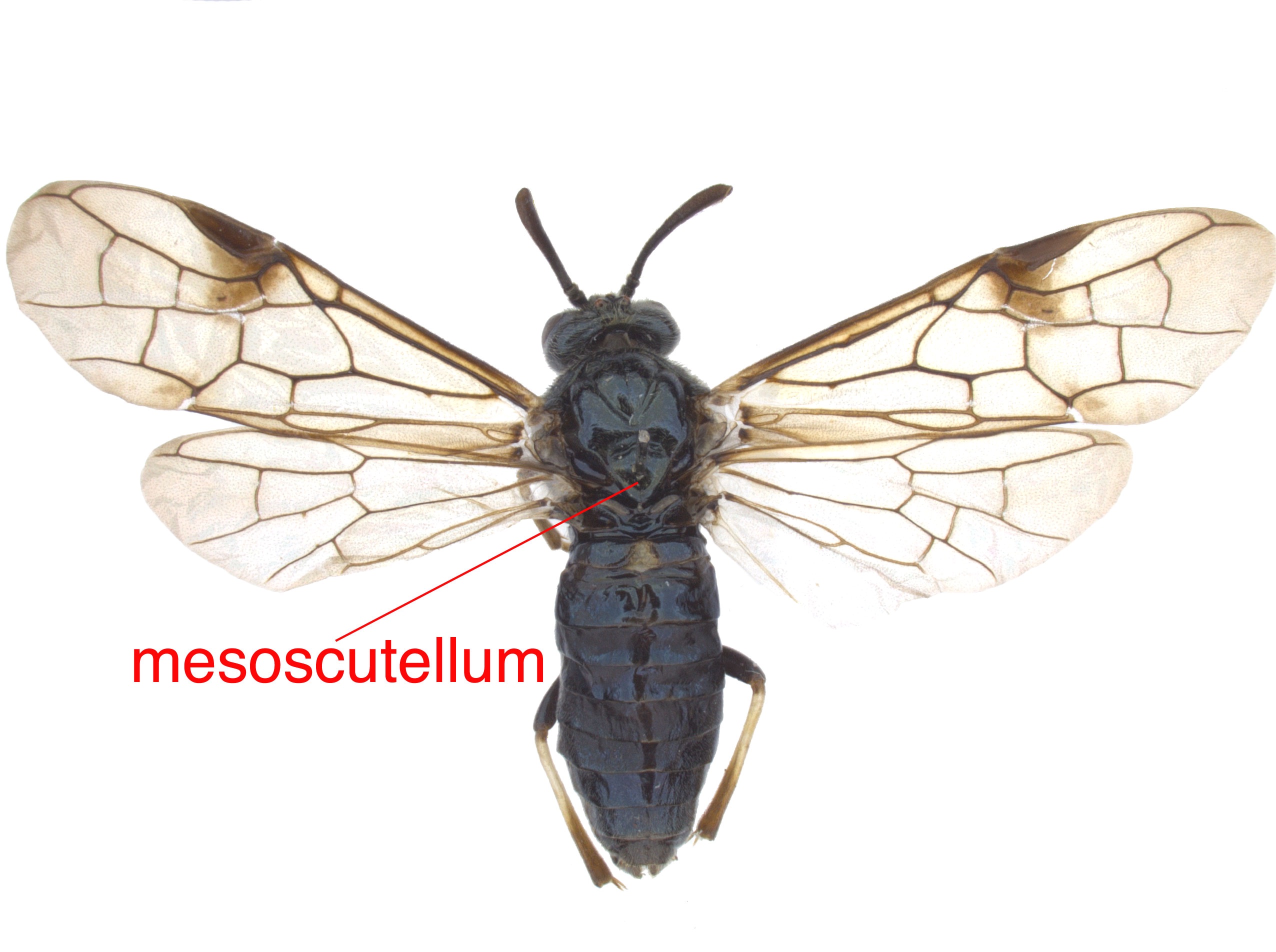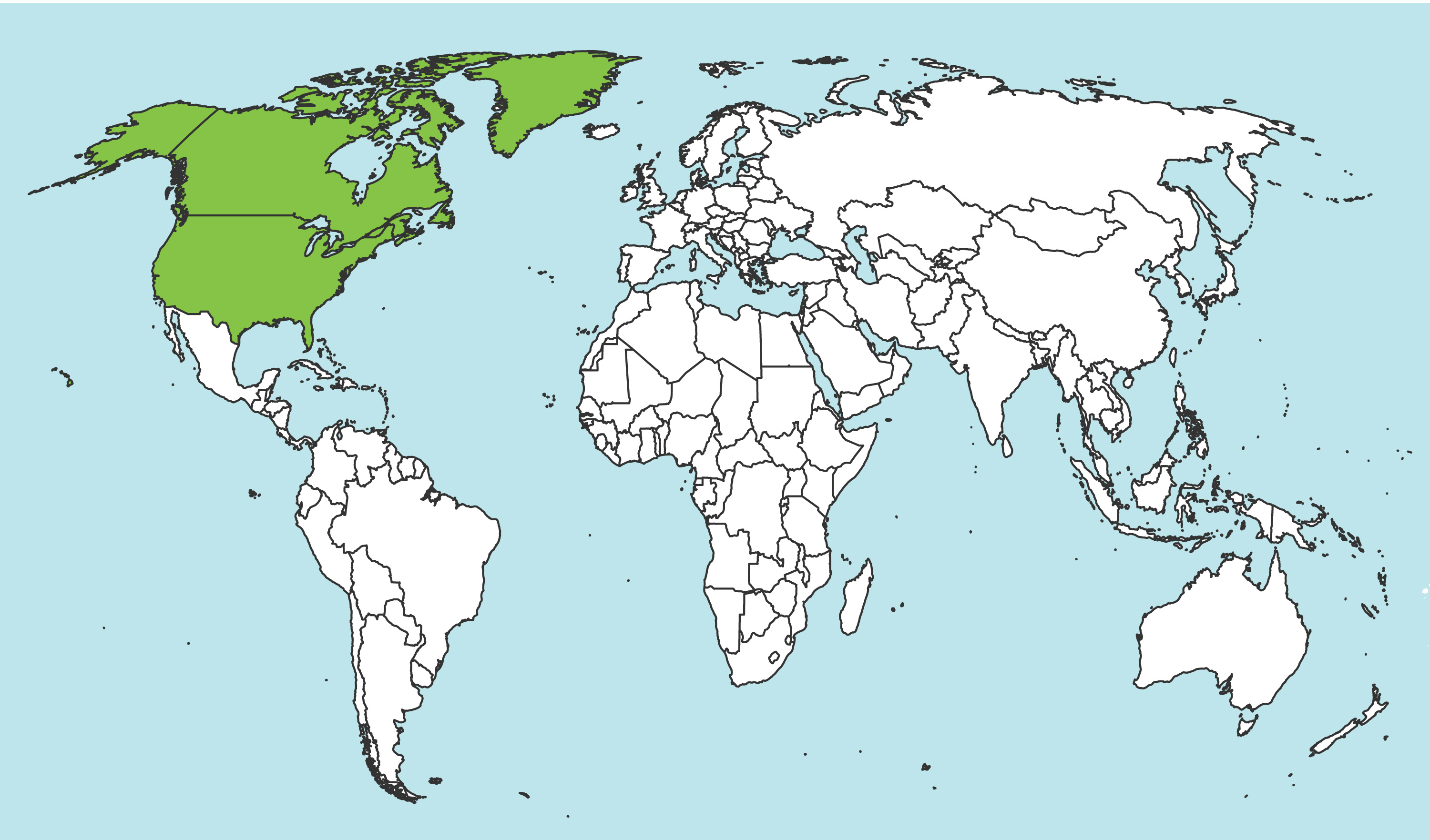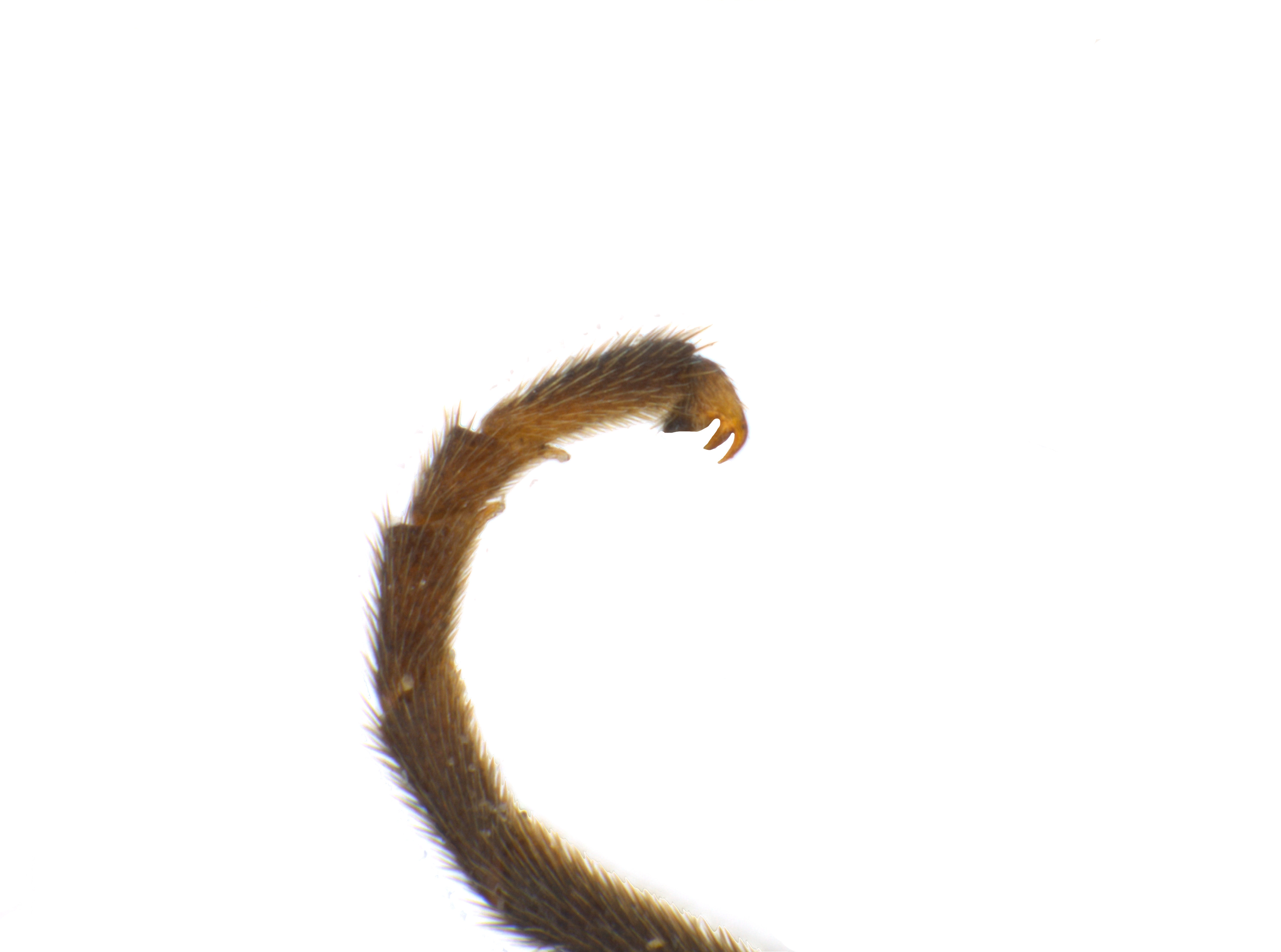Family: Tenthredinidae
Family common name: common sawflies
Subfamily: Allantinae
Tribe: Empriini
Genus: Haymatus D.R. Smith, 1979
Subgenera: none
The Tenthredinidae are the most species-rich family and are found throughout the world, in all continents but Antarctica. They are known as the “common sawflies.” They can generally be recognized by a cylindrical body and long, segmented antennaeantenna:
the sensory organ emerging from the front of the head, usually between the compound eyes and above the clypeus; includes the flagellum, scape and pedicel
 . Otherwise, they come in a variety of colors, sizes, and forms (Goulet 1992Goulet 1992:
. Otherwise, they come in a variety of colors, sizes, and forms (Goulet 1992Goulet 1992:
Goulet H. 1992. The genera and subgenera of the sawflies of Canada and Alaska: Hymenoptera. Symphyta. The insects and arachnids of Canada. Part 20. Agriculture Canada Publication.).
Sawflies in the Allantinae subfamily are mostly black and shining, sometimes with other colors. They have agricultural importance as some species are pests on cultivated and ornamental plants (Smith 1979aSmith 1979a:
Smith DR. 1979a. Nearctic sawflies. IV. Allantinae: Adults and larvae (Hymenoptera: Tenthredinidae). Technical Bulletin, U.S. Department of Agriculture 1595: 1-172.). They can be distinguished from other subfamilies by wing venationvenation:
the network of veins on a wing
(Smith 2003aSmith 2003a:
Smith DR. 2003a. A Synopsis of the sawflies (Hymenoptera: Symphyta) of America south of the United States: Tenthredinidae (Allantinae). Journal of Hymenoptera Research 12 (1): 148-192.).
Haymatus is monotypicmonotypic:
describes having only one representative; ex. a genus that includes only one species
(Taeger et al. 2010Taeger et al. 2010:
Taeger A, Blank SM, and Liston AD. 2010. World Catalog of Symphyta (Hymenoptera). Zootaxa 2580: 1-1064.). Haymatus blassus is 5.5–8 mm in length and mostly black, sometimes with red coloring on the female pronotumpronotum:
the anterodorsal part of the thorax, often situated posterior to the head
 , mesonotummesonotum:
, mesonotummesonotum:
the second segment of the dorsum of the thorax
 , and/or mesoscutellummesoscutellum:
, and/or mesoscutellummesoscutellum:
the anterior section of the scutellum
 (Smith 1979aSmith 1979a:
(Smith 1979aSmith 1979a:
Smith DR. 1979a. Nearctic sawflies. IV. Allantinae: Adults and larvae (Hymenoptera: Tenthredinidae). Technical Bulletin, U.S. Department of Agriculture 1595: 1-172.).
There is one described extantextant:
in existence; opposite of extinct
species worldwide, and it is NearcticNearctic:
describing the region of the Northern Hemisphere that includes North America south through northern Mexico
 (Taeger et al. 2010Taeger et al. 2010:
(Taeger et al. 2010Taeger et al. 2010:
Taeger A, Blank SM, and Liston AD. 2010. World Catalog of Symphyta (Hymenoptera). Zootaxa 2580: 1-1064.).
A NearcticNearctic:
describing the region of the Northern Hemisphere that includes North America south through northern Mexico
 key to species is included in Smith 1979aSmith 1979a:
key to species is included in Smith 1979aSmith 1979a:
Smith DR. 1979a. Nearctic sawflies. IV. Allantinae: Adults and larvae (Hymenoptera: Tenthredinidae). Technical Bulletin, U.S. Department of Agriculture 1595: 1-172..
Subfamily characters
 vein M and 1m-cu parallel (Smith 1979aSmith 1979a:
vein M and 1m-cu parallel (Smith 1979aSmith 1979a: vein 2A+3A complete, connected to 1A by crossveincrossvein:
vein 2A+3A complete, connected to 1A by crossveincrossvein:Genus characters
 (Smith 1979aSmith 1979a:
(Smith 1979aSmith 1979a: margin straight or nearly so (Smith 1979aSmith 1979a:
margin straight or nearly so (Smith 1979aSmith 1979a: vein 2r present (Smith 1979aSmith 1979a:
vein 2r present (Smith 1979aSmith 1979a: vein M intersecting Sc+R at the intersection of Sc+R and Rs+M (Smith 1979aSmith 1979a:
vein M intersecting Sc+R at the intersection of Sc+R and Rs+M (Smith 1979aSmith 1979a: cellcell:
cellcell: M present (Smith 1994aSmith 1994a:
M present (Smith 1994aSmith 1994a: with long inner tooth and without basalbasal:
with long inner tooth and without basalbasal:Haymatus can be confused with similar species in the subfamily Allantinae or tribe Empriini. It can be distinguished by the straight clypealclypeus:
sclerotized area on the front of the head located between the antennal insertions and labrum
 margin, long antennaeantenna:
margin, long antennaeantenna:
the sensory organ emerging from the front of the head, usually between the compound eyes and above the clypeus; includes the flagellum, scape and pedicel
 , and a lack of abdominal spots (Smith 1979aSmith 1979a:
, and a lack of abdominal spots (Smith 1979aSmith 1979a:
Smith DR. 1979a. Nearctic sawflies. IV. Allantinae: Adults and larvae (Hymenoptera: Tenthredinidae). Technical Bulletin, U.S. Department of Agriculture 1595: 1-172., Smith 1994aSmith 1994a:
Smith DR. 1994a. The female of Haymatus blassus (Hymenoptera: Tenthredinidae). Entomological News Philadelphia 105 (5): 257-258.).
none
unknown
The biology of Haymatus is unknown. Other genera in the subfamily feed on leaves and pupate in the soil (Smith 1979aSmith 1979a:
Smith DR. 1979a. Nearctic sawflies. IV. Allantinae: Adults and larvae (Hymenoptera: Tenthredinidae). Technical Bulletin, U.S. Department of Agriculture 1595: 1-172.).
World: This genus is only known from North America (Taeger et al. 2010Taeger et al. 2010:
Taeger A, Blank SM, and Liston AD. 2010. World Catalog of Symphyta (Hymenoptera). Zootaxa 2580: 1-1064.).
North America: Haymatus blassus occurs in South Carolina and Georgia (Smith 1994aSmith 1994a:
Smith DR. 1994a. The female of Haymatus blassus (Hymenoptera: Tenthredinidae). Entomological News Philadelphia 105 (5): 257-258.).
Map data from the Smithsonian National Musuem of Natural History (USNM)
Details about data used for maps can be found here.